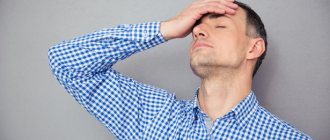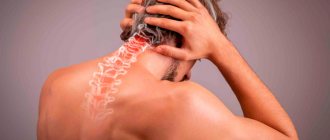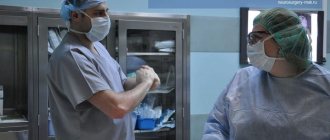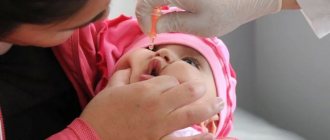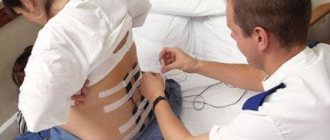Process Features
The main purpose of depilation with tweezers is to remove hair from the follicles, which will stop their growth forever. The first few sessions give inconsistent results. However, over time, the hairs in the frequently treated area thin out, become thin and light, and then stop growing completely. For this reason, you should not abandon the procedure, giving preference to a less labor-intensive method. Using tweezers, you can remove those hairs that cannot be removed during other procedures, such as shaving or sugaring.
When buying tweezers for work, you need to pay attention to its shape:
- Rounded. Such a tool is considered the safest due to the absence of the risk of injury. However, not all hairs can be captured with rounded tweezers.
- Beveled. This option is also safe and suitable for use both in the clinic and at home. A beveled tool is more effective than a rounded one.
- Spicy. With its help you can capture even the shortest hairs. The disadvantage of the tool is the high risk of injury.
- Straight. The least convenient tweezers for removing hair at home.
The photo shows three types of tweezers: with straight, beveled and pointed edges
Advantages and disadvantages
Advantages of using tweezers:
Versatility. The method is suitable for removing soft and hard hair from 2 mm.
Minimum number of contraindications.
Low cost of the procedure. Having bought tweezers once, a girl can use them for many years.
The ability to permanently get rid of unwanted hair. The effect of the first procedures lasts for two weeks. For some girls it lasts no more than a week. However, repeated depilation will damage the hair follicle and prevent hair from growing.
The disadvantages of the procedure include:
Traumaticity . Careless movement with tweezers can damage the skin. In some cases, minor bleeding may occur.
Inability to remove hairs shorter than 2 mm and vellus hairs . Such hairs are difficult to grab with tweezers.
Inflammatory processes in the treated area . Inflammations are possible if hygiene requirements are not followed. But even with proper treatment, slight swelling and red dots remain.
Diagnosis of trichotillomania
Hair pulling is not a health-threatening phenomenon, but these obsessive actions worsen a person’s quality of life and lead to social maladjustment. This disorder requires treatment.
Diagnosis of trichotillomania is based on certain criteria:
- a person pulls out hair in such an amount that leads to baldness or significant thinning of the hairline;
— independent attempts have been made repeatedly to get rid of obsessive hair pulling or reduce its intensity, but they did not lead to a positive result;
- pulling out hair causes suffering to the patient, depresses him, and reduces his ability to function normally.
Skin preparation
Before starting the procedure, it is necessary to clean the desired area of skin from possible contaminants. If the intimate area is to undergo the procedure, it is advisable to take a warm shower, but not earlier than 1 hour before the procedure.
We will remove the hair of our programmer, who voluntarily expressed a desire to help 
To relieve pain from plucking, you can use a special cooling gel or Emla cream, which is applied 20-30 minutes before work and then washed off after a few minutes. Before the session begins, the skin is treated with an antiseptic. The tweezers also need to be treated with an antiseptic, after washing them with soap and running water.
You can clean the tweezers before the procedure with soap.
A week before the procedure, the area of skin selected for hair removal can be shaved, since the hairs that grow back after this procedure are thicker. They are easier to grab with tweezers. You should not shave your facial hair.
Also, before the procedure, tweezers can be treated with an antiseptic chlorhexidine
Execution technique
The hair must be grabbed as close to the root as possible and pulled out in the direction of its growth. Do not pull on the tip or middle. This way the hair can be broken. Its root will remain under the skin. The hair will grow back and may become ingrown. Under no circumstances should you pull sharply, otherwise the hair may break off! Excessively sharpened tweezers can lead to biting the hair, which is also not desirable.
In the image you can see step by step how to remove hair correctly. Image is clickable
What is trichotillomania?
Currently, trichotillomania is recognized as not as rare and harmless as previously thought. Patients studied in dermatology clinics appear normal in their daily behavior, except for the habit of pulling out hair, causing baldness (alopecia). In younger patients, alopecia is largely considered a dermatological condition and is diagnosed by a specialist. As a rule, the further prognosis of the condition is quite good. However, in a small group of adult patients who have suffered from trichotillomania for years, the alopecia is usually extensive and difficult to treat, even with psychiatric intervention.
Among children, this disease most often occurs in boys, and in adolescence and adulthood - in girls and women.
Aftercare
After the session, the skin should be treated with an antiseptic, and then with lotion or anti-inflammatory ointment or cream, for example, Panthenol, Synthomycin or Levomekol.
After hair removal, you can use Levomekol, it is relatively inexpensive and very effective
To avoid bleeding, you can use a cold compress to constrict the capillaries. Decoctions of medicinal plants (celandine, chamomile) are suitable for compresses.
Treatment of the hair removal site with Levomekol
For several days after hair removal, it is not recommended to sunbathe, swim in the river (sea), or visit the solarium or sauna. It is allowed to take a cool or warm shower. However, you should not rub the treated area with a washcloth or scrub.
Possible problems
Why do most people, when they cut a hair with a razor or break off the hair under the base soon after epilation, hair grows quickly and the hairs become stiffer and thicker?
Hair growth is a natural physiological process. Hair is a keratinized formation of the epidermis located in the pores, where the sebaceous glands are also located, and serves to remove secretions, the so-called sebum, through the lumen to the surface of the skin to soften and moisturize it, as well as the toxins it contains. The removal of sebum is a very important process, it is necessary so that the secretion does not accumulate in the pores and does not interfere with tissue respiration, and the accumulation of secretion serves as a good environment for the development of microbial flora and the subsequent occurrence of inflammation! Thus, the cells of the hair follicles begin to actively divide so that the hair can again emerge through the surface of the skin and continue to perform its main function.
It is worth noting that there are pores without hair; sweat glands are located there; their secretion is not so thick, so it does not need to be drained. However, even in such pores, outflow can be impaired if the pores are clogged from the outside with foreign particles, for example particles of powder or other loose makeup products, as well as when using too greasy creams, oils and improper cleansing of the skin.
Trichophagia - features of symptoms
In most cases, trichophagia appears against the background of a pathological desire to pull out one's hair (this is trichotillomania - a separate disorder). This disease is rare and occurs mainly in women. In most cases, patients eat their own hair, but there are also cases of eating someone else's hair. Moreover, in especially rare cases, patients even eat pet hair.
Most often, a person eats hair purely automatically. However, there are also completely exceptional cases when the disease goes too far. For example, the story of a 44-year-old American woman who ate the hair of her own cat for a long time received quite a lot of publicity. Moreover, the woman groomed her pet on her own. The patient seriously believed that wool was rich in vitamins and minerals and was also a delicacy. Fortunately, the young lady’s strange gastronomic preferences came to the attention of psychiatrists.
A strong desire to eat hair does not arise quickly; at first the patient simply pulls it out, then begins to gnaw it, then eats it. As mentioned above, many patients use only follicles, but sometimes whole hair is used.
Constantly eating hair leads to the formation of hairballs in the stomach, and subsequently intestinal obstruction. Surgeons often find hair in human intestines. Even if they get there by accident, they pose a huge problem for digestion. There is no need to talk about purposefully eating hair. Often neglected trichophagia leads to death.
Hair tends to tangle and tangle. The most dangerous situations are when a hairball is in a person’s stomach, and a long “tail” stretches into the intestines. This phenomenon even has its own name - “Rapunzel syndrome”. Experienced surgeons talk about situations where the patient’s stomach resembled a solid ball of hair - this is about five kilograms.
Trichophagia is one of the mental disorders and obsessive drives in which an irresistible desire first appears, and then a habit is formed. Trichophagia is often observed in schizophrenia or mental retardation, but often healthy-looking people also suffer from it.
Features of using the method for various areas
When working with different parts of the body, you need to take into account the sensitivity of the skin and the location of the area: the more accessible it is for depilation, the better the effect can be achieved. If the zone is inaccessible for some reason, you should use other methods.
Face
On the face, eyebrows are most often corrected. However, some women need to get rid of the mustache above their upper lip. It is necessary to remove unwanted hair gradually, over several sessions, to avoid the appearance of swelling and redness on the face.
Bikini area
Before plucking your hair, you need to steam your skin. It is recommended to use a scrub or washcloth soaked in warm water to lift the hairs. Such measures will help make the procedure less painful and free ingrown hairs. If the hairs in the bikini area are longer than 4-5 mm, they need to be shortened with scissors or a trimmer. For effective removal, the skin should be pulled with your fingers in the direction opposite to the growth of the hairs and the movement of the tweezers.
The procedure should not be carried out during menstruation, as the pain threshold is greatly reduced, which will increase the pain from manipulation.
You can remove hair with tweezers both in the classic and deep bikini areas. However, in the latter case, the use of tweezers should be replaced by other methods.
Axillary area
Tweezers are rarely used for the armpit, since plucking will have to be done in an awkward position. You can work in front of a mirror. But if possible, you should look directly at the vegetation, and not at its reflection. To do this, you need to turn your head in the right direction and bend it slightly. When you stay in this position for a long time, dizziness appears and your limbs become numb. For this reason, it is necessary to pause for 5-10 minutes.
When a child tears out his hair, this is neurosis
In the practice of psychotherapists, an amazing phenomenon occurs - a child automatically pulls out the hair on his head, and also pulls out his eyebrows and eyelashes. In medical practice this is called trichotillomania. The child does this automatically, without realizing why.
He not only does not experience pain, but, on the contrary, experiences some kind of deep satisfaction when he feels and pulls out another hair or eyelash. He himself is perplexed, looking in the mirror at the result of his actions. He promises not to do this again and holds out for a while. But now he’s distracted, reading or watching a TV show, and his fingers are automatically in his hair...
Trichotillomania is a unique type of obsessive-compulsive disorder. It is known that people have had a special relationship with the hair on the head, eyebrows, eyelashes, as well as the beard since ancient times. To cut a person's hair or trim his beard was often considered an insult, dishonor, and loss of dignity. Seeing yourself shorn in a dream meant a harbinger of trouble or illness. In ancient times, they made a vow to God not to cut their hair or shave, so that he would save and avert trouble. There was a vow, for example, not to cut the beard until victory over the enemy.
There is a known case when an athlete, having lost the fight for first place at the Olympic Games, cut her hair bald, thus punishing herself. Likewise, a child unconsciously deprives himself of hair, eyebrows and eyelashes out of guilt or because of unbearable annoyance at himself, at his mistakes, failures, defeats. Children with trichotillomania, who are not loved by their own or adoptive parents (rejection!), unconsciously perceive such rejection as their own guilt and worthlessness. Children do not look for the culprits on the side; they believe that since they are not loved, it means they are bad. In other cases, these are children who were acutely aware of their true or imaginary inadequacy and who despised themselves. So everything is not easy with neurosis in a person from a very early age.
A real-life incident: an eight-year-old girl pulls out hair on her head, eyelashes and eyebrows. Draws princesses with lush hair, thick eyelashes and eyebrows. It all started after the girl’s mother underwent a serious operation. The girl, who had no father, lived with her aunt, was sad and, hearing the anxious conversations of adults, felt fear for her mother. She gave up her hair, eyebrows and eyelashes, attaching great importance to them and, as it were, sacrificing the most precious things in the name of “so that mom would be healthy,” as if paying off with such a sacrifice from possible trouble. And all this is unconscious. With surprise and fear, the mother told the doctor: “She runs her hand over her head and eyelids, looks for a slightly grown hair or eyelash and rips them out.” Yes, this is the form the child’s neurosis took.
Thus, with trichotillomania, a symbolic ritual of obsessive actions takes place. Having disfigured himself, the child feels unconscious satisfaction, defending his sense of dignity in such a psychoprotective manner: “I am bad, I am guilty of something, but I am punishing myself!”
Author: V.I. Garbuzov
Psychologist in Yekaterinburg , who works with the topic of childhood neuroses - Muzheva Ekaterina Yurievna (+7)



